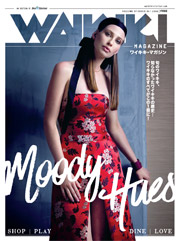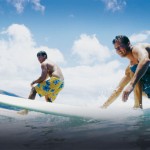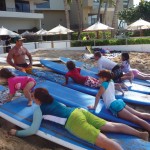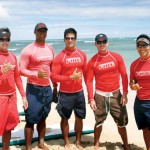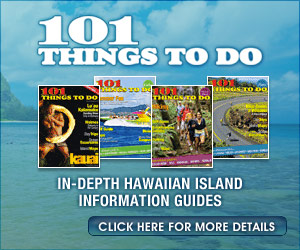Surfing: Hawai‘i’s Gift to the Sporting World
There’s no escaping the culture of surfing here on O‘ahu—it’s a part of the fabric of the island. And although you might think the bright-colored board shorts, dozens of surfboard shapes and endless surf-inspired apparel are “what it’s all about,” the essence of surfing isn’t merely an image on a T-shirt.
Early Hawaiians considered “wave sliding” a ritual and social activity reserved for the royal family. Boards were carved from fallen trees and rode by ali‘i (chiefs) in places that commoners weren’t even allowed in the water (Waikiki, for example). In fact, a commoner who disobeying could be sentenced to death!
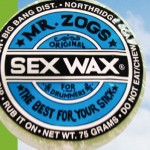
Must have! No need to blush when you see this at the ABC Store checkout; it helps surfers keep their feet on board!
Today, there’s no less passion for the sport. The surf industry—aside from merchandising—is a multimillion-dollar industry for professional surfers who earn their keep by carving turns on challenging waves. And there’s no better place to reside year round than on O‘ahu, which has the most consistent surf breaks anywhere else in the world. With names like Baby Queens, Old Mans, Cliffs, Ka‘ena Point and Pipeline, literally hundreds of breaks can be found on our shoreline.
Yet you don’t need to be a pro to catch a wave. Most surf schools guarantee “stand up on your first lesson,” while others offer services such as in-water photography or even video services (in case you need proof of your accomplishments to bring back home to your friends and family). All aim to share the “stoke” of what it feels like to catch a wave, and have it propel you through Waikiki’s tranquil, azure waters.
Generally, longboards (8 to 12 feet) are easier for beginners and ideal for paddling in the breaks around Waikiki; shortboards (under 7 feet) are meant for higher performance, quick turns and larger waves; stand-up paddle-boards provide a graceful, more aerobic workout that makes use of a tall paddle used to propel surfers across longer distances. All are available for rent in Waikiki, both on the beach, in surf shops and at the major resort hotels.
Whether you’re 4 or 94, there’s a wave out there for you. If you’ve never surfed, please seek out an experienced guide. However easy-seeming the surf, it’s fairly easy to get hurt in the ocean. Experienced guides will begin with a land lesson that covers the basics (and safety), followed by a “session” in the water. They range from $65/hour. up to a few hundred dollars for individual private lessons. Below are a few names to get you started. Hang ten!
Schools of Surf
Here are two great places to get your feet wet in Waikiki.
Founded by professional surfer Ty Gurney, Ty Gurney Surf School focuses on getting its student into the peak of surfing. Students are towed out into the lineup by their instructor and allowed to get a taste of the local surf community.
205 Lewers St. | (808) 271-9557
Offering a memorable experience, Hawaiian Fire Surf School puts an emphasis on safety. Professional surfers and firefighters certified in Open Water Rescue, CPR and EMT-B operate these hands-on classes.
3318 Campbell Ave. (808) 737-3473



